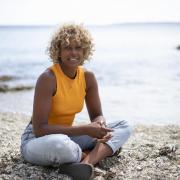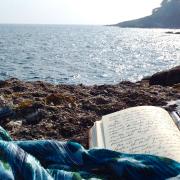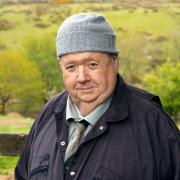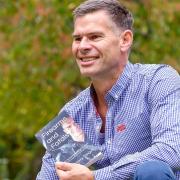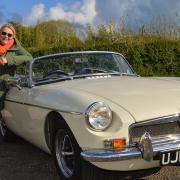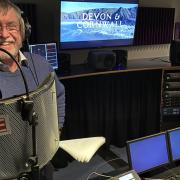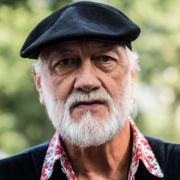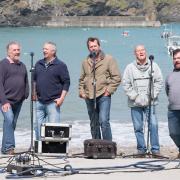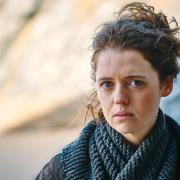Kari Herbert first dipped her toes in the ice-cold waters of the Arctic at just 10 months old when her father, the explorer Sir Wally Herbert, moved the family to live among the Inuit people. She tells Carol Burns about how he inspired her life - and her work

and unknown parts of our world: from little-known but remarkable explorers, to the women at the turn of the last century who waited for their men to return from the dangers of the polar wilds.
Kari’s father, Sir Wally Herbert, was part of a generation of pioneering explorers – who took his family to live with a tribe of Inuit for over two years on a remote island off the coast of Northwest Greenland. The settlement of 12 families had no electricity or running water, but Kari remembers it as an extraordinary time. She has had a deep connection with the Arctic ever since and has returned many times.
“When I was researching the book about
polar women, I already had quite a handle on their lives. But there’s always a surprise – resdiscovering the voices of these really remarkable, strong women is has been incredibly inspiring, in particular that of Robert Peary’s wife, Josephine.
“Peary spent his whole active life trying to reach the North Pole in expedition after expedition – he was obsessed with the idea of being the discover of the Pole. His wife never wanted be an explorer but she went to the Arctic countless times. I grew up with descendents of her children’s friends.
Jo lived a difficult but adventurous life, completely hidden from view. She gave birth in the Arctic – very daring in her day; she was a fascinating character and her story is deeply moving. It’s one of those stories that you can barely believe is true.
“These women were very strong and supportive. They didn’t have telephones, there was no radio reception, the men could be away for years at a time with no way of communication.
“It was a very different world to what we know now.”
While the story of the race to the South Pole lost by Robert Falcon Scott and his ill-fated team to the Norwegian Amundsen, continues to be retold, there are many other explorers who have helped us to understand the polar world but whose contributions are all but forgotten. Kari is determined to bring their fascinating – and sometimes tragic – stories to life.
“My husband and I are lucky to have wonderful relationships throughout the world of polar explorers, and have the privilege of being able to bring their stories to life,” continues Kari. “This includes stories of those people largely forgotten and I find that intriguing. It’s a very different style of exploration now. There’s no virgin wilderness to discover – and now it’s more about athleticism and competition. For people like my dad it was about exploring new frontiers – it was quite a noble pursuit – discovering what was out there. He was one of the last explorers to set foot where no man had set foot before.”
Sir Wally Herbert began surveying new areas of the Antarctic in 1955 and also retraced the routes of Scott, Amundsen and Shackleton. He was an expert navigator and dog-sledger. During his career he mapped over 40,000 square miles of virgin territory, but his greatest achievement was his 16-month, 3,620-mile surface crossing of the Arctic Ocean via the North Pole in 1969. It was a pioneering journey that has never been repeated. He garnered many awards for his work, including a knighthood in 2000 and has a mountain range and plateau named after him in the Antarctic.
When he died in 2007, The Times led its obituary calling him the ‘greatest polar explorer’.
“By the time I came along, he was entering a gentler part of his life,” says Kari of her father. “He had done this extraordinary feat of exploration and he was much more interested in recording the polar environment and the Inuit way of life. For him it was never man against the environment, he was always man for the environment.
“His way of exploring was to go to very remote places and live there for years at a time with the indigenous people.”
Polarworld’s most recent work, Letters From Everest by George Lowe,records the epic journey by the veteran climber who formed part of the successful 1953 Mount Everest expedition with Sir Edmund Hillary and Sherpa Tenzing Norgay. Marking the 60th anniversary of the climb, the new book uses his letters home to reveal what it was like for the climbers.
“Letters from Everest is a first-hand account of the first ascent of Everest,” says Kari. “The story of this legendary expedition has been retold many times, but through our personal connection with George Lowe we had a unique opportunity to tell his side of the story. These letters were daily accounts written to his sister. He’s a beautiful storyteller. Through him we see a very different side to the expedition, and encounter the wonderful experiences the team had on the way. We see that it was not just about competition and getting to the top first. This book really brings to life these young men who were having the time of their life.
“As kids you don’t appreciate how brilliant your parents are until you are much older and trying to find your own way of life. My Dad really was a hero.
“Having been to the Arctic at 10 months old, it’s in my blood.”
Discover more stories about our great explorers at polarworld.co.uk n




